#acclimatize Kilimanjaro
Link
The biggest hurdle to overcome when climbing Kilimanjaro is acclimatization. Here are several ways to prevent altitude sickness.
0 notes
Text


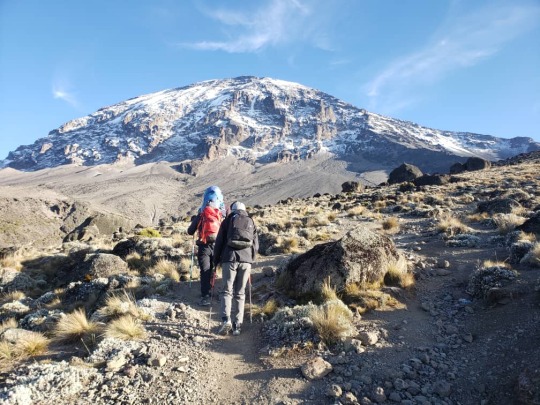
The Marangu route, also known as the "Coca-Cola" route, is the oldest, most well-established route on Kilimanjaro. This is the only route which offers sleeping huts in dormitory style accommodations in lieu of camping. There are 60 bunk beds each at Mandara and Kibo Huts, and 120 bunk beds at Horombo Hut. Guests are supplied with mattresses and pillows, but sleeping bags are still required. The huts have communal dining halls and basic washrooms, ranging from flushing toilets and running water at the lower huts to long drop toilets and buckets of water at Kibo Hut.
Many favor Marangu because it is considered to be the easiest path on the mountain, given its gradual slope and direct path. However, the short time frame of the route makes Altitude Acclimatization fairly difficult. The route approaches Mount Kilimanjaro from the southeast. Marangu is unfortunately less scenic than the other routes because the ascent and descent are along the same path. It is also the most crowded route for that reason.
Day 1: Marangu Gate to Mandara Hut
Elevation (ft): 6,046 ft to 8,858 ft
Distance: 8 km
Hiking Time: 4-5 hours
Habitat: Rain Forest
Hut: Mandara Hut.
We head to the Marangu Gate for the necessary formalities before beginning our trek. The trail climbs through a tropical rain forest near the upper edge of the forest line, where we sometimes see playful blue monkeys. The trail then widens to expose beautiful hillsides until we reach Mandara Hut.
Day 2: Mandara Hut to Horombo Hut
Elevation (ft): 8,858 ft to 12,205 ft
Distance: 12 km
Hiking Time: 6-8 hours
Habitat: Heath / Moorland
Our second day on the trail starts up with a steep ascent through the forest and opens into high moorland. If the sky is clear, we might get our first views of Kibo and Mawenzi Peaks. Those two volcanic peaks make up the summit of Kilimanjaro.
Day 3: Horombo Hut to Mawenzi Hut to Horombo Hut
Elevation (ft): 12,205 ft to 14,160 ft to 12,205 ft
Distance: 10 km
Hiking Time: 3-5 hours
Habitat: Heath
This extra day is used for Adaptation. We hike towards or all the way to Mawenzi Hut and back. The unique landscape offers motivating views of Kibo and Mawenzi.
Day 4: Horombo Hut to Kibo Hut
Elevation (ft): 12,205 ft to 15,430 ft
Distance: 10 km
Hiking Time: 6-8 hours
Habitat: Alpine Desert
On this day we climb gently, then cross the lunar desert of the “Saddle” between Mawenzi and Kibo to reach our campsite, which sits at the bottom of the Kibo crater wall. Once at Camp, we rest and enjoying an early dinner and prepare for summit day.
Day 5: Kibo Hut to Uhuru Point to Horombo Hut
Elevation (ft): 15,430 ft to 19,341 ft to 12,205 ft
Distance: 22 km
Hiking Time: 10-13 hours
Habitat: Arctic
We wake up in the middle of the night and begin the final push to reach the Roof of Africa. The trail to Gilman’s Point is very steep, and the ascent will be slow and steady. From Gilman’s, it is a traverse along the crater rim to Uhuru Peak. We stay at the summit for a short time, to take photos and enjoy the views, before retracing our steps all the way back to Horombo Hut.
Day 6: Horombo Hut to Marangu Gate
Elevation (ft): 12,205 ft to 6,046 ft
Distance: 20 km
Hiking Time: 5-7 hours
Habitat: Rain Forest
A long trek is in store for today, however it is mostly downhill. Once we reach the park headquarters, there at Marangu Gate, we pick up our certificate, that proves our achievement, and catch our vehicle transfer to the Hotel in Moshi.
Included
o Park fees,
o Hut fees
o Rescue fees
o 18% VAT on tour fees & services, which cost nearly 55 % of the total cost charged.
o Transportation to & from the Mountain Gate
o Professional mountain guides, cooks and porters
o 3 meals daily while on the mountain
Not Included
o Both national and international flights
o Medical Insurance
o Tips to Mountain Crew
o Items of a personal nature
o Laundry Services
o Alcoholic beverages
Contact Us via WhatApp +255 786499087
Email us Direct: [email protected]
#Marangu Route 6 days Trek#Kilimanjaro Marangu Itinerary#Marangu Route Summit Climb#6-day Marangu Route Highlights#Kilimanjaro Marangu Huts#Marangu Route Acclimatization#Best Time to Hike Marangu#Marangu Route Camping Options#Kilimanjaro Scenic Views#Marangu Route Difficulty Level#Kilimanjaro National Park#Marangu Route Accommodation#Kilimanjaro Guided Expeditions#Marangu Route Altitude Sickness#Kilimanjaro Weather Conditions#Marangu Route Trekking Adventure#Kilimanjaro Uhuru Peak Ascent#Marangu Route Flora and Fauna#Kilimanjaro Cultural Tours
0 notes
Text

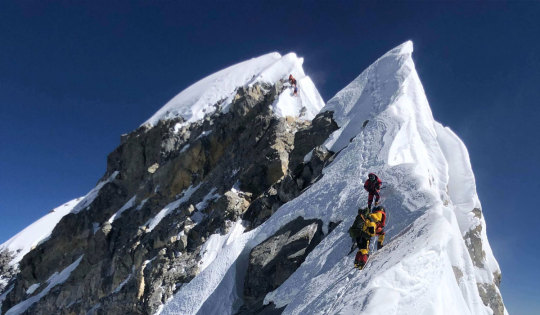
Why are Hundreds of Climbers Heading into the ‘Death Zone’ on Mt Everest This Spring?
Thick murky clouds fill the sky, with freezing winds carrying snow faster than 100 miles per hour. With a frigid –30 degrees Fahrenheit temperature, life-threatening snowstorms and avalanches are frequent.
And these are typical conditions on the world’s highest mountain: Mount Everest.
The behemoth towers 29,032 feet (8,849 meters) between Nepal and Tibet in the Himalayas, with its peak surpassing most clouds in the sky.
An attempt to climb Everest requires months, sometimes years, of training and conditioning – even then, reaching the summit is far from guaranteed. In fact, more than 300 people are known to have died on the mountain.
And yet the mountain still draws hundreds of climbers who are determined to reach its peak every spring. Here’s what it takes to make the climb and what has motivated some climbers to summit the world’s highest peak.
‘I thought I was in pretty good shape’
Dr. Jacob Weasel, a trauma surgeon, successfully summited Everest last May after conditioning for nearly a year.
“I would put on a 50-pound backpack and do two hours on a stair stepper with no problem,” Weasel said. “So, I thought that I was in pretty good shape.” However, the surgeon said he was humbled after discovering that his fitness was no match for the lofty athleticism required by the mountain.
“I would take five steps and have to take 30 seconds to a minute to catch my breath,” Weasel recalled of his struggle with the lack of oxygen available while ascending Everest.
Climbers aiming for the summit usually practice an acclimatizing rotation to adjust their lungs to the thinning oxygen levels once they arrive on the mountain. This process involves mountaineers traveling upward to one of the four designated camps on Everest and spending one to four days there before traveling back down.
This routine is repeated at least two times to allow the body to adapt to declining oxygen levels. It increases a climber’s chances of survival and summiting.
“If you took somebody and just plopped them up at the high camp on Everest, not even on the (top), they would probably go into a coma within 10 to 15 minutes,” Weasel said.
“And they would be dead within an hour because their body is not adjusted to that low of oxygen levels.”
While Weasel has successfully summited dozens of mountains, including Kilimanjaro (19,341 ft), Chimborazo (20, 549 ft), Cotopaxi (19,347 ft), and most recently Aconcagua (22,837 ft) in January, he said none of them compares to the high-altitude of Mount Everest.
“Because no matter how well you are trained, once you get to the limits of what the human body can take, it’s just difficult,” he continued.
At its highest altitude, Everest is nearly incapable of sustaining human life and most mountaineers use supplementary oxygen above 23,000 feet. The lack of oxygen poses one of greatest threats to climbers who attempt to summit, with levels dropping to less than 40% when they reach the Everest “death zone.”

Tents of mountaineers are pictured at Everest base camp in the Mount Everest region of Solukhumbu district on April 18, 2024.
‘It’s difficult to survive up there’
The first target for mountaineers is Everest base camp at approximately 17,000 feet, which takes climbers about two weeks. Then they ascend to the three remaining camps stationed along the mountain.
Camp four, the final one before the summit, sits along the edge of the death zone at 26,000 feet, exposing climbers to an extremely thin layer of air, subzero temperatures, and high winds powerful enough to blow a person off the mountain.
“It’s difficult to survive up there,” Weasel said. He recalls passing bodies of climbers who died on the mountain – which isn’t uncommon. The bodies of the fallen mountaineers are well-preserved, exhibiting little to no decay due to the intense cold temperatures.
“I am probably more familiar with death and the loss of life than most people,” the surgeon said. “For me it was just a reminder of the gravity of the situation and the fragility of what life is… even more so motivation for appreciating the opportunity.”
High-altitude cerebral edema (HACE) is one of the most common illnesses climbers face while attempting to summit. “Your brain is starved of oxygen,” Weasel said.
HACE results in the brain swelling during its attempt to regain stable oxygen levels, causing drowsiness, trouble speaking and thinking. This confusion is often accompanied by blurred vision and sporadic episodes of delusion.
“I had auditory hallucinations where I was hearing voices [of friends] that I thought were coming from behind me,” Weasel recalled. “And I had visual hallucinations,” he added. “I was seeing the faces of my children and my wife coming out of the rocks.”
Weasel recalled crossing paths with a friend, Orianne Aymard, who was trapped on the mountain due to an injury. “I remember staring at her for like five minutes and just saying, ‘I’m so sorry,’” Weasel said.
“I’ve spent over a decade of my life training to help people as a surgeon, and being in a position where there’s somebody who requires your help and you are unable to offer any assistance… that feeling of helplessness was tough to deal with,” Weasel said.
Aymard survived. She was rescued and suffered from several broken bones in her foot, in addition to severe frostbite on her hands. Despite all her injuries, Aymard is considered one of the lucky ones.

Mountaineers climbing during their ascend to summit Mount Everest on May 7, 2021.
‘Their bodies will get frozen into the mountain’
Everest has long been a tomb for climbers who have succumbed to harsh conditions or accidents on its slopes.
When a loved one or fellow climber is severely injured or dies on the mountain, it’s routine to leave them behind if you’re unable to save them, according to Alan Arnette, a mountaineer coach who summited Everest in 2014.
“What most teams do out of respect for that climber, they will move the body out of sight,” he said. And that’s only if they can.
“Sometimes that’s just not practical because of the bad weather, or because their bodies will get frozen into the mountain,” Arnette said. “So, it’s very difficult to move them.”
Seeing a corpse on Everest is comparable to seeing a horrible car accident, according to the mountain coach. “You don’t turn around and go home,” Arnette said. “You respectfully slow down… or say a prayer for that person, and then you continue.”
It’s been 10 years since the single deadliest accident on the world’s highest mountain, after an avalanche killed 12 Sherpa guides. And 2023 was recorded as the deadliest year on Everest, with 18 fatalities on the mountain – including five people that are still unaccounted for.
The process of recovering bodies is extensive, sometimes impossible. Helicopter rescues and search missions are challenging due to the high altitude and frequently treacherous conditions, resulting in some rescuers dying in their attempt to save others.
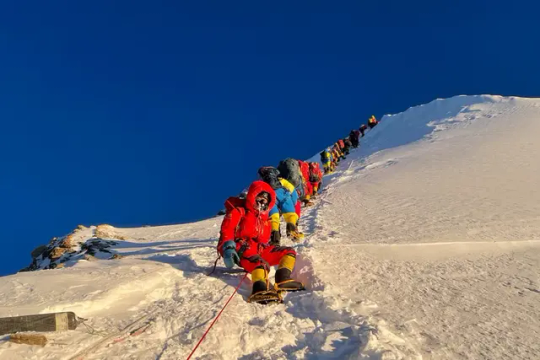
Mountaineers as they climb during their ascend to summit Mount Everest on May 12, 2021.
‘Watching the sunrise from 29,000 feet’
The 3,000 feet climb from camp four to the summit can take anywhere from 14 to 18 hours. Therefore, mountaineers typically leave the camp at night.
“That entire night was cold,” Weasel recalled. “It’s dark, it’s windy.” But it was proven to be worth it in the morning, he said.
“Watching the sunrise from 29,000 feet and having that pyramid of Everest’s shadow projected onto the valley below you…,” Weasel said. “It was probably one of the most beautiful things I’ve ever seen in my life,” he continued.
“It’s weird standing up there and knowing that everything else on the planet is below where you’re standing.”
The size of the mountain is humbling, the surgeon said. “I’ve never felt so small,” he recalled. “That mixture of humility and connectedness with something bigger than yourself is the proper place from which we ought to approach our existence on this planet.”
Like Weasel, Arnette summited at sunrise, and experienced this same feeling of “smallness.” At the top there were “more mountains than you can count,” Arnette remembered. “It was a sense of enormous gratitude and at the same time I knew I had to get back down.”
After about 20 minutes to an hour, climbers typically start to descend back to the base of the mountain.
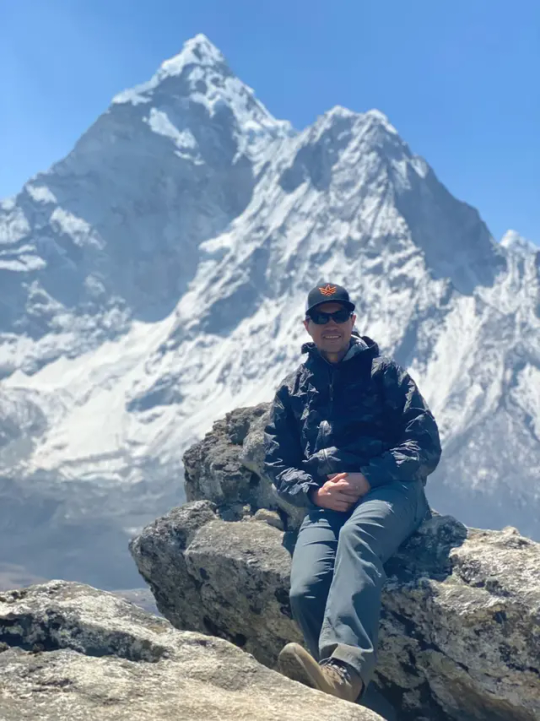
Jacob Weasel.
‘Bigger than yourself’
Before leaving for Nepal, Weasel was gifted an eagle’s feather as a beacon for his Native American heritage.
He was determined to plant the feather on top of Everest “as a symbol of our people and what we’ve endured for the past several hundred years,” Weasel said. “Showing that our spirit is not broken, but we’re able to rise above the things that have happened to us,” he added.
“I remember planting that eagle’s feather on the top of the world and the feeling of real privilege that I felt in representing our people.” And this is why he decided to summit Everest, to be an example that anything is possible for young Native children and his tribe.
“Knowing what it’s like up there, for me personally, the only real justification for going and putting your life, and other lives, at risk is if you’re climbing for a reason that is much bigger than you,” said Weasel.
Arnette attempted to climb Everest three times before he successfully summited.
“My first three tries, I wasn’t clear on my why,” Arnette said. When his mother was diagnosed with Alzheimer’s disease, he looked at his purpose for climbing differently.
“I wanted to do it to raise money for Alzheimer’s and honor my mother,” Arnette said.
There are approximately 300 people that have been issued a permit from the Nepal government to climb the mountain this year, according to Arnette. And he said the number is down from previous years.
“I think one of the reasons is because we had the 18 deaths last year, and people realize that Mount Everest is a dangerous mountain.”
However, he doesn’t believe that should deter climbers from attempting to summit. “I’m a big believer that when you go climb these mountains that you come home a better version of yourself,” Arnette said.
“Everest has become too commercialized with ‘you’re stepping over dead bodies’ and ‘it’s littered with trash,’” the mountain coach said. “The reality is that it is a very small degree all of that, but there’s a lot of joy that people get out of doing it,” he continued.
“And that’s the reason that we climb mountains.”
By Kara Nelson.

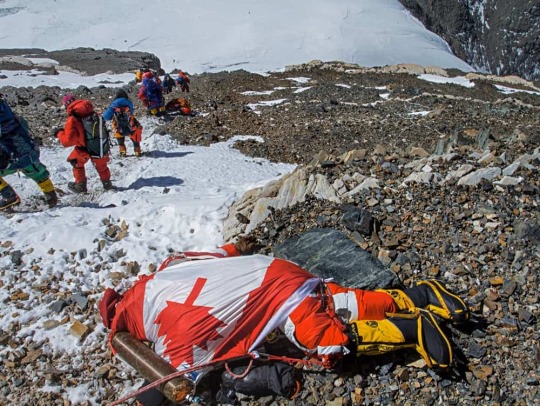
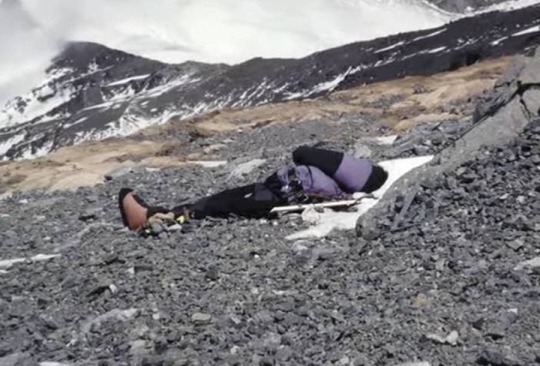


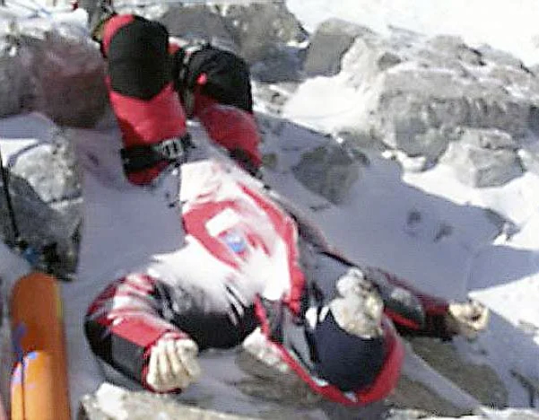
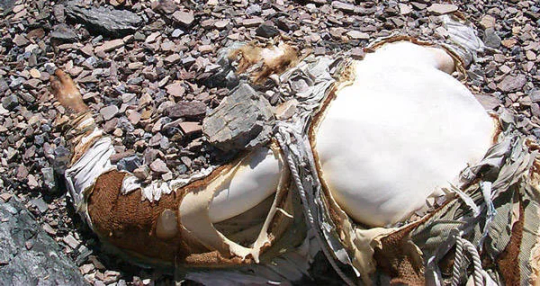
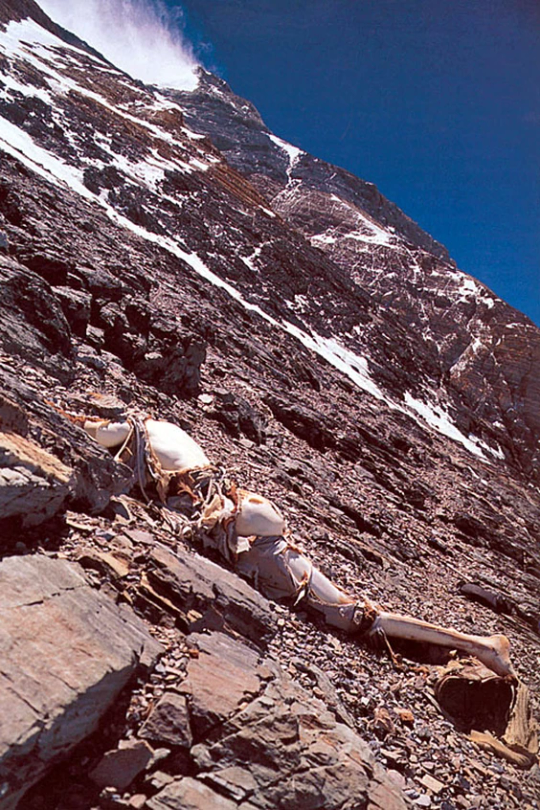

#Mt Everest#Mount Everest#Everest#The Death Zone#Why are Hundreds of Climbers Heading into the ‘Death Zone’ on Mt Everest This Spring?#world’s highest mountain#the Himalayas#mountain climbing#death on a mountain#history#history news#long reads#long post#long story
32 notes
·
View notes
Text
15 Toughest Treks in the World for Hiking Enthusiasts
Are you an adventurer at heart, always seeking the next thrilling journey? If the whisper of the wind through the pines, the allure of the untamed wilderness, and the exhilaration of ascending to new heights stir your soul, then this is the blog for you.
Welcome to our curated list of the 15 toughest treks in the world. These aren’t your average hikes; they’re thrilling adventures that push you to your limits, challenge your resilience, and reward you with breathtaking views and unforgettable experiences.
From the harsh arctic landscapes of Greenland to the towering peaks of the Nepalese Himalayas, each of these treks offers a unique journey that will test your endurance and ignite your adventurous spirit.
So, lace up your boots, pack your gear, and join us as we explore the thrilling world of extreme trekking. The mountains are calling – are you ready to answer?
Table Of Contents
1. Everest Base Camp Trek, Nepal
2. The Snowman Trek, Bhutan
3. The Pacific Crest Trail, USA
4. The Mount Kilimanjaro Trek, Tanzania
5. The Inca Trail to Machu Picchu, Peru
6. Mount Elbrus Trek, Russia
7. The Great Himalaya Trail, Nepal
8. Appalachian Trail, USA
9. Overland Track, Australia
10. GR20, Corsica
11. The Polar Route, Greenland
12. Routeburn Track, New Zealand
13. Larapinta Trail, Australia
14. The Long Range Traverse, Canada
15. Dientes Circuit, Chile
Conclusion
1. Everest Base Camp Trek, Nepal
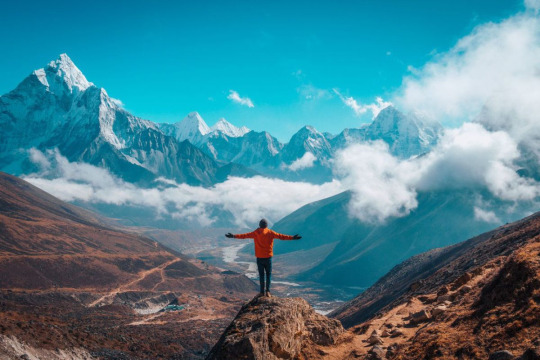
Embark on a journey to the foot of the highest peak in the world. The Everest Base Camp trek is not just a trek but a journey through the heart of the majestic Himalayas. This trek takes you through diverse landscapes, from lush valleys, glacial moraines, and terraced fields to pine forests and Sherpa villages. Along the way, you’ll encounter suspension bridges, ancient monasteries, and, of course, breathtaking views of some of the world’s tallest mountains. It’s a true test of endurance and acclimatization, but the reward is a firsthand view of Everest’s grandeur.
Altitude: 5,545 meters (18,192 ft)
Best Time to Go: March to May and September to November
Difficulty Level: Challenging
2. The Snowman Trek, Bhutan
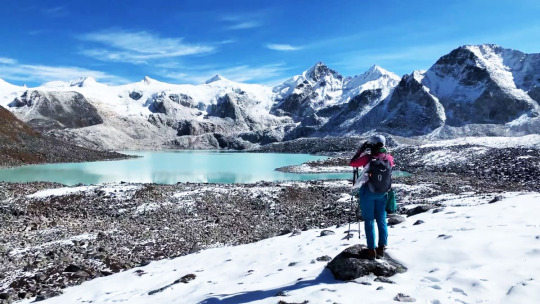
Touted as one of the most difficult treks in the world, the Snowman Trek traverses through eleven high-altitude passes, each over 4,500 meters. The journey unfolds across the remote Lunana region, offering a deep dive into Bhutan’s rich cultural heritage and lush, untouched landscapes. Expect to encounter serene mountain lakes, majestic peaks, isolated villages, and diverse wildlife. This trek is as mentally demanding as it is physically due to its length and the isolation of the terrain.
Altitude: 5,320 meters (17,454 ft)
Best Time to Go: September to October
Difficulty Level: Very Challenging
3. The Pacific Crest Trail, USA
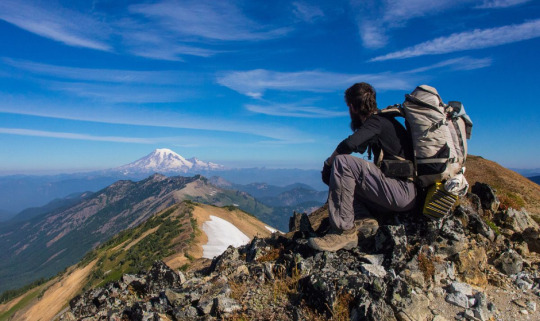
Spanning from the Mexican to the Canadian border, the Pacific Crest Trail offers an immersive journey through the diverse ecosystems of the American West. The trek takes hikers through scorching deserts, glaciated expanses of the Sierra Nevada, and the dense forests of Oregon and Washington. The length and varied terrain of the trek make it one of the toughest but also one of the most rewarding.
Altitude: 4,009 meters (13,153 ft)
Best Time to Go: May to November
Difficulty Level: Very Challenging
4. The Mount Kilimanjaro Trek, Tanzania
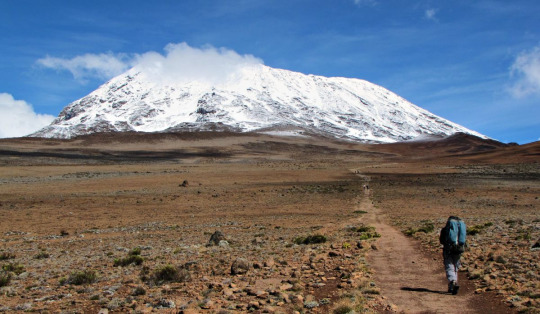
The highest peak in Africa, Mount Kilimanjaro, offers multiple routes for trekkers. Each route presents its unique set of challenges, including altitude sickness, steep inclines, and varying weather conditions. The journey unfolds through five different ecosystems, from lush rainforests and alpine deserts to the icy summit of Uhuru Peak. Despite the challenges, reaching the “Roof of Africa” is an unforgettable experience.
Altitude: 5,895 meters (19,341 ft)
Best Time to Go: January to March and June to October
Difficulty Level: Challenging
5. The Inca Trail to Machu Picchu, Peru
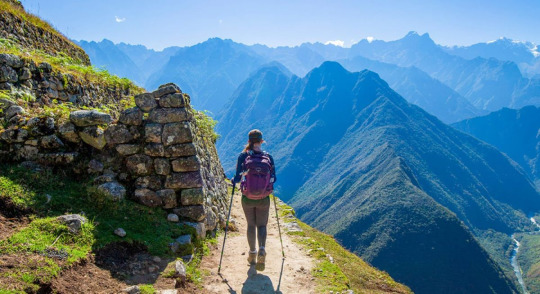
The Inca Trail is a rich journey through a variety of microclimates, across high mountain passes, and into lush subtropical vegetation. This trek provides glimpses into the past, with Incan paving stones, ruins, and tunnels scattered along the route. Despite the physical challenge of the high altitude and the steep ascents and descents, this trek offers an unrivaled reward: the sight of the ancient city of Machu Picchu at sunrise. The combination of natural beauty, fascinating history, and the physical challenge make this one of the most famous treks in the world.
Altitude: 4,200 meters (13,780 ft)
Best Time to Go: May to September
Difficulty Level: Moderate to Challenging
6. Mount Elbrus Trek, Russia
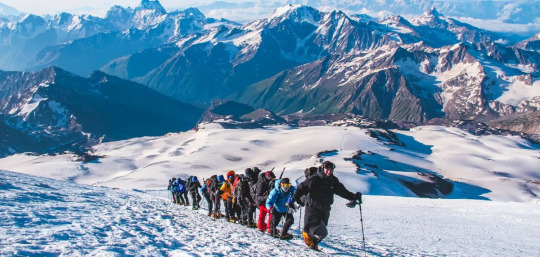
Mount Elbrus, nestled in the heart of the Caucasus Mountains, is the highest peak in Europe. The trek to its summit involves navigating through precarious glaciers and steep inclines. Despite the challenges, it offers panoramic views of the Caucasus and a unique sense of accomplishment. The trek’s difficulty is compounded by the unpredictable weather and the need for proper acclimatization, making it a must for experienced climbers.
Altitude: 5,642 meters (18,510 ft)
Best Time to Go: July to August
Difficulty Level: Very Challenging
7. The Great Himalaya Trail, Nepal
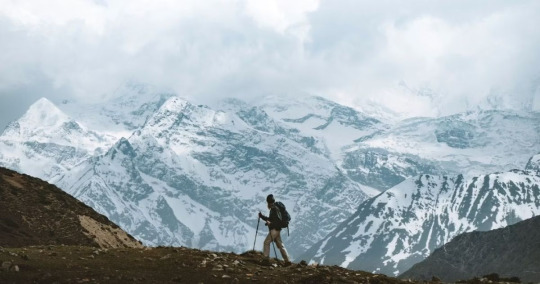
As one of the longest and highest walking trails in the world, the Great Himalaya Trail traverses the full length of the Nepalese Himalayas. This route takes trekkers through some of the wildest and most remote mountain environments on earth. The terrain is challenging and the route is remote, but the breathtaking views of high peaks, passes, and valleys make the trek an unforgettable journey. The trail is a testament to the beauty, diversity, and grandeur of the Himalayan range.
Altitude: 6,146 meters (20,160 ft)
Best Time to Go: March to May and October to November
Difficulty Level: Very Challenging
8. Appalachian Trail, USA

Spanning fourteen U.S. states, the Appalachian Trail is one of the longest continuously marked footpaths in the world. This journey takes hikers through wild landscapes, dense forests, and over numerous mountain peaks. Each section of the trail presents its unique set of challenges, from harsh weather conditions to physically demanding terrain. Still, the trail’s stunning beauty and the sense of accomplishment from completing sections, or the entire trail, draw hikers from around the world.
Altitude: 2,024 meters (6,643 ft)
Best Time to Go: March to September
Difficulty Level: Challenging
9. Overland Track, Australia

The Overland Track, Australia’s premier alpine walk, takes trekkers through the heart of the Cradle Mountain-Lake St Clair National Park. As part of the Tasmanian Wilderness World Heritage Area, this 65-km trail is a journey of discovery through diverse landscapes. From ancient rainforests and alpine meadows to rugged mountains and sparkling lakes, the track offers breathtaking views at every turn. The challenge of the Overland Track lies in its length and the unpredictable Tasmanian weather, but its stunning scenery and rich biodiversity make it worth the effort.
Altitude: 1,545 meters (5,069 ft)
Best Time to Go: October to May
Difficulty Level: Moderate to Challenging
10. GR20, Corsica

Considered the most challenging long-distance trail in Europe, the GR20 in Corsica stretches from the north to the south across the mountainous heart of the island. This stunning trek takes hikers through rugged peaks, beautiful glacial lakes, and dense forests. The trail’s beauty is matched by its difficulty, with steep ascents, rocky terrain, and often unpredictable weather conditions. The GR20 is a grueling trek but offers a rewarding experience that’s hard to match.
Altitude: 2,706 meters (8,878 ft)
Best Time to Go: June to September
Difficulty Level: Very Challenging
11. The Polar Route, Greenland
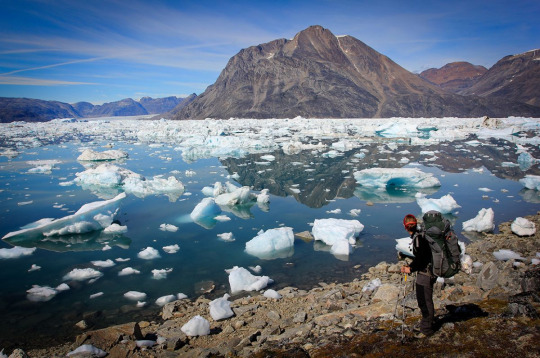
An arctic adventure like no other, the Polar Route in Greenland is a journey through ice fields, fjords, and remote arctic tundra. This challenging expedition tests the endurance of even the most experienced hikers, but the reward is a stunning, untouched wilderness, the chance to witness the Northern Lights, and the possibility of encountering arctic wildlife. The trek’s isolation and the harsh arctic climate add to the difficulty, making it a trek suited for the truly adventurous.
Altitude: Varies, up to 2,000 meters (6,562 ft)
Best Time to Go: April to June
Difficulty Level: Very Challenging
12. Routeburn Track, New Zealand

The Routeburn Track, located in New Zealand’s South Island, offers an incredible journey across the Southern Alps. The track winds through vast valleys, pristine alpine lakes, and verdant forests, showcasing the best of New Zealand’s diverse natural beauty. The trail is well-maintained, but the fluctuating weather conditions and the physical demands of the mountainous terrain make it a challenging trek. Regardless, the breathtaking views and the chance to explore the unique landscapes of New Zealand make the Routeburn Track a must-do for any hiking enthusiast.
Altitude: 1,255 meters (4,117 ft)
Best Time to Go: October to April
Difficulty Level: Moderate to Challenging
13. Larapinta Trail, Australia
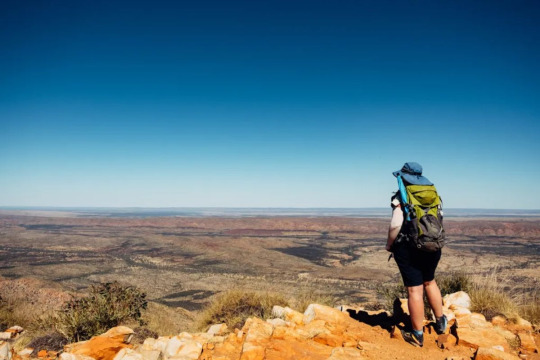
Situated in the heart of Central Australia, the Larapinta Trail extends over 223 kilometers along the spine of the West MacDonnell Ranges. This trail brings you up close to the ancient landscape of the Northern Territory, offering stunning views of jagged ridges, weathered peaks, and the rich, red soil of the Australian Outback. Hikers will encounter a wide variety of wildlife, rare plants, and a stark, captivating beauty that’s unique to this part of the world. The route’s length, combined with the harsh, arid climate, make it a challenging trek.
Altitude: 1,380 meters (4,528 ft)
Best Time to Go: April to September
Difficulty Level: Challenging
14. The Long Range Traverse, Canada
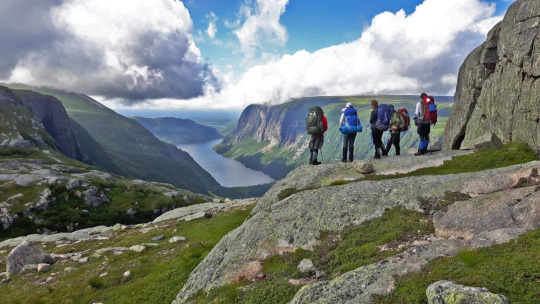
The Long Range Traverse is an unmarked and rugged backcountry route through some of the best wilderness in Canada’s Gros Morne National Park. This challenging trek requires navigation skills as you make your way through dense forest, across bogs, and up steep scree slopes. However, the breathtaking views of fjords, glacial valleys, and the raw, untamed beauty of the Newfoundland wilderness make it worth the effort.
Altitude: 806 meters (2,644 ft)
Best Time to Go: June to September
Difficulty Level: Challenging
15. Dientes Circuit, Chile
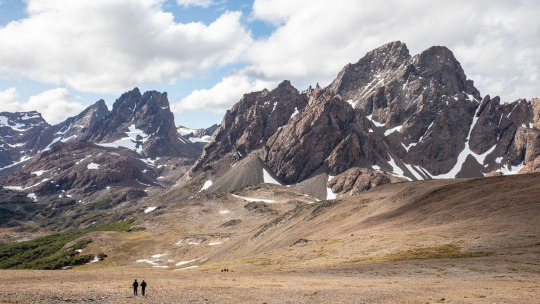
Found on the isolated Isla Navarino in the extreme south of Chile, the Dientes Circuit is a trek like no other. This remote, rugged trail will test your trekking skills as you navigate through untouched Magellanic forests, peat bogs, and steep mountain passes. The views from the trail are unparalleled, with the jagged peaks of the Dientes de Navarino range on one side and the Beagle Channel, Cape Horn, and the snowy mountains of Tierra del Fuego on the other. This trek is not for the faint-hearted, but the stunning, end-of-the-world scenery makes it a must-do for experienced hikers.
Altitude: 800 meters (2,624 ft)
Best Time to Go: December to March
Difficulty Level: Challenging
Conclusion
Tackling these treks isn’t merely about testing your physical stamina. It’s about pushing your boundaries, exploring the unexplored, and discovering your own resilience in the face of adversity. It’s about standing on top of a peak, looking out at the panoramic vistas, and realizing that the world is as vast as it is beautiful – and you’re a part of it.
So, whether you’re a seasoned hiker or an adventurous spirit looking for your next challenge, we hope this list has ignited a spark of wanderlust. Remember, every journey begins with a single step. And who knows? Perhaps your next step will lead you on one of the toughest treks in the world.
After all, as the famous mountaineer, Sir Edmund Hillary once said, “It’s not the mountain we conquer, but ourselves.” So here’s to the treks that await us, the summits yet to be conquered, and the adventures that lie ahead. Happy trekking!
2 notes
·
View notes
Text
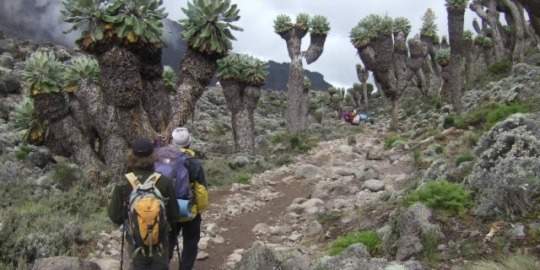
Both the Lemosho and Machame routes offer unique and rewarding experiences for climbers seeking to conquer Mount Kilimanjaro. The Lemosho route stands out for its scenic beauty, tranquility, and higher success rates due to its longer duration and gradual ascent. It provides ample time for acclimatization, increasing the chances of reaching the summit.
On the other hand, the Machame route is known for its popularity, diverse landscapes, and challenging sections that add an element of adventure to the climb. It offers a more direct and steeper ascent, making it suitable for experienced hikers who are comfortable with more rugged terrain.
Ultimately, the choice between the Lemosho and Machame routes depends on your preferences, fitness level, and hiking experience. Both routes provide incredible views, encounters with unique flora and fauna, and a sense of achievement upon reaching the summit. Whichever route you choose, proper preparation, physical fitness, and acclimatization are essential for a safe and successful Kilimanjaro adventure.
No matter which route you embark on, Climbing Mount Kilimanjaro is an awe-inspiring and life-changing journey. So, lace up your boots, prepare yourself mentally and physically, and embark on an adventure of a lifetime to conquer Africa's highest peak.
For more information visit this blog @
#kilimanjaro routes#kilimanjaro mountain#mt kilimanjaro#kilimanjaro#mount kilimanjaro#tarangirenationalpark#tanzania safaris#safaris in tanzania#tanzania safari tours#safari in tanzania
2 notes
·
View notes
Text
Mount Kilimanjaro Machame Route: A Journey to the Roof of Africa

Mount Kilimanjaro, standing at 5,895 meters (19,341 feet), is the highest peak in Africa and one of the world’s most iconic trekking destinations. The mountain, located in Tanzania, offers several routes to the summit, with the Machame Route being one of the most popular due to its stunning landscapes and high success rate. Also known as the "Whiskey Route," the Machame Route is renowned for its scenic beauty and diverse terrain, taking trekkers through lush rainforests, moorlands, and alpine deserts, leading up to the snow-capped summit, Uhuru Peak.
At Kahlur Adventures, we offer a well-structured and guided Mount Kilimanjaro Expedition via the Machame Route, ensuring a safe and rewarding experience for all adventure enthusiasts.
Why Choose the Machame Route?
The Machame Route is one of the longer paths up Kilimanjaro, making it an excellent choice for acclimatization, increasing the chances of a successful summit. The route covers 62 km over eight days, giving trekkers enough time to adjust to the high altitude. Though more challenging than the easier Marangu Route, it rewards hikers with breathtaking panoramic views and a diverse range of ecosystems.
Kahlur Adventures Kilimanjaro Expedition Overview
Name of the Trek: Mount Kilimanjaro (5,895 M)
Duration of Expedition: 08 Nights 09 Days
Trek Distance: 62 KM
Pickup Timing: As per the flight
Drop Timing: As per the flight
Guides Services: Experienced Trekking Guides
Travel Route: Kilimanjaro Airport - Arusha - Machame Gate - Machame Camp - Shira Camp - Barranco Camp - Karanga Camp - Barafu Camp - Uhuru Peak - Mweka Camp - Mweka Gate - Kilimanjaro Airport
Pickup Point: Kilimanjaro International Airport
Drop Point: Kilimanjaro International Airport
Trek Route: Machame Route
Country: Tanzania
With Kahlur Adventures, trekkers can expect certified trekking guides, porters, and all necessary logistics to make the climb as smooth as possible. We prioritize safety and comfort, while ensuring you experience the majestic beauty of Mount Kilimanjaro in all its glory.
Why Trek with Kahlur Adventures?
At Kahlur Adventures, we provide an all-inclusive Mount Kilimanjaro Expedition experience that covers everything from trekking permits to food, accommodations, and professional guidance. Our experienced guides are well-versed in high-altitude trekking and are trained to ensure your safety and comfort throughout the expedition.
Whether you're a seasoned trekker or a first-time adventurer, our team at Kahlur Adventures will help you achieve the summit while making sure you have an unforgettable journey.
Short Itinerary of Mount Kilimanjaro Machame Route
Day 1– Arrive Kilimanjaro Airport (JRO) and drive to Arusha | Elevation: 1400 M
Day 2– Arusha to Machame Gate | Elevation: 1490 M to Machame Camp | Elevation: 2980 M
Day 3– Machame Camp | Elevation: 2980 M to Shira Camp |Elevation: 3840 M
Day 4– Shira Camp | Elevation: 3840 M to Lava Tower | Elevation: 4630 M to Barranco Camp | Elevation: 3950 M
Day 5– Barranco Camp | Elevation: 3950 M to Karanga Camp | Elevation: 4250 M
Day 6– Karanga Camp | Elevation: 4250 M to Barafu Camp | Elevation: 4600 M
Day 7- Summit Day – Barafu Camp | Elevation: 4600 M to Uhuru Peak | Elevation: 5895 M to Mweka Camp | Elevation: 3100 M
Day 8– Mweka Camp | Elevation: 3100 M to Mweka Gate | Elevation: 1980 M
Day 9– Departure from Kilimanjaro
Conclusion
Trekking Mount Kilimanjaro via the Machame Route is a once-in-a-lifetime experience that combines the thrill of adventure with the awe of nature’s beauty. As you ascend through various ecosystems, the journey to the summit of Africa's highest peak will challenge you both physically and mentally, but the reward is immeasurable.
With the expert guidance of Kahlur Adventures, you can be confident in your ability to reach the summit safely while creating unforgettable memories. Whether you're seeking a personal achievement or an adventure in nature, the Mount Kilimanjaro Expedition offers the perfect balance of challenge and reward. Let us help you conquer Africa's highest point and tick off this extraordinary feat from your bucket list.
Frequently Asked Questions
Q. How difficult is the Machame Route on Mount Kilimanjaro?The Machame Route is considered a moderate to difficult trek. It requires a good level of physical fitness due to the long trekking days and high altitude.
Q. What is the best time to trek Mount Kilimanjaro?The best time for the Mount Kilimanjaro Expedition is during the dry seasons, which are from January to March and from June to October.
Q. How long does it take to complete the Machame Route?The Machame Route typically takes 7-9 days to complete, with Kahlur Adventures offering an 8-night, 9-day package.
Q. Do I need prior trekking experience for Mount Kilimanjaro?No prior trekking experience is required, but you should be physically fit and have some experience with long hikes or outdoor activities.Q. What is the success rate of the Machame Route?The success rate for the Machame Route is relatively high due to the longer acclimatization time, with around 85% of trekkers reaching the summit.
0 notes
Text
What Makes the Lemosho Route Special?

Lemosho Route combines stunning scenery, diverse landscapes, and a greater chance of summiting Africa's highest peak. The route's longer duration allows for proper acclimatization, increasing the likelihood of a successful ascent. While challenging, the Lemosho Route offers a rewarding adventure for those seeking a journey to Uhuru Peak.
The Lemosho Route is one of the most celebrated paths to the Climbing Mount Kilimanjaro, and for good reason. This trek offers a unique blend of stunning landscapes, diverse ecosystems, and a less crowded experience, making it an ideal choice for adventure seekers. Here’s what makes the Lemosho Route stand out.
1. Scenic Diversity
The Lemosho Route showcases some of the most breathtaking scenery on Kilimanjaro. Hikers traverse lush rainforests, alpine meadows, and stark volcanic landscapes. The initial days through the rainforest are enchanting, filled with exotic plants, colourful birds, and the sounds of nature. As you ascend, the vistas open up to reveal panoramic views of the mountain and surrounding plains, offering a visual feast at every turn.
2. Fewer Crowds
One of the most appealing aspects of the Lemosho Route is its relatively low foot traffic compared to other trails. This means hikers can enjoy a more tranquil experience, allowing for a deeper connection with nature. The solitude also enhances the sense of adventure and exploration, making the journey feel more personal and rewarding.
3. Acclimatization Opportunities
The Lemosho Route is designed with acclimatization in mind, featuring a longer itinerary that allows trekkers to ascend slowly. This gradual ascent helps your body adjust to the altitude, significantly increasing your chances of reaching the summit without experiencing altitude sickness. The itinerary includes multiple camps, giving you the time needed to acclimatize effectively.
4. Stunning Wildlife
As you hike through diverse ecosystems, you may encounter a variety of wildlife unique to the region. From colourful birds to elusive monkeys, the route offers ample opportunities for wildlife spotting, enriching your overall experience.
5. The Summit Success Rate
Thanks to its thoughtful design and acclimatization strategy, the Lemosho Route boasts a high success rate for reaching Uhuru Peak, the highest point on Kilimanjaro. Hikers often return from this route with not only memories of a stunning landscape but also a profound sense of achievement.
Finally, the Lemosho Route is a perfect blend of natural beauty, tranquillity, and a well-planned ascent, making it a top choice for anyone looking to conquer Africa’s highest peak. Go for this remarkable journey, and discover why it’s considered one of the best ways to experience Kilimanjaro!
0 notes
Text
Top Kilimanjaro Trekking Packages for Adventure Seekers in 2024
Standing as the highest peak in Africa, Mount Kilimanjaro offers an unparalleled trekking experience. Adventure seekers from all over the world are drawn to this iconic mountain in Tanzania, eager to challenge themselves and be rewarded with stunning views. Whether you're a seasoned climber or a first-time adventurer, there is a Kilimanjaro trekking package suited to your level of expertise and interest.
In 2024, the demand for Kilimanjaro trekking packages is expected to rise, as more travelers seek meaningful, adrenaline-pumping experiences. This blog will guide you through the top packages available, each offering unique routes, durations, and additional safari adventures. You'll also discover nearby areas that add even more to your Tanzanian journey, making it an unforgettable adventure.
Why Trek Kilimanjaro?
Mount Kilimanjaro is not just a destination for climbers but a symbol of endurance and achievement. Its towering summit at 5,895 meters (19,341 feet) presents a challenge that attracts climbers of all ages and experience levels. What makes Kilimanjaro unique is that it's one of the few high-altitude treks that doesn't require technical climbing skills, making it accessible to most adventure enthusiasts.
The various routes up Kilimanjaro offer a range of scenic landscapes, from rainforests and alpine meadows to lunar-like deserts and glaciers. Each route has its own challenges, so it's essential to choose the right Kilimanjaro trekking package based on your fitness level, preferences, and schedule.

Top Kilimanjaro Trekking Packages for 2024
1. Machame Route – The "Whiskey" Route
One of the most popular routes for Kilimanjaro trekking, the Machame Route, also known as the "Whiskey" Route, offers stunning views and a moderate level of difficulty. It's favored by adventure seekers who are looking for a bit of a challenge without requiring extensive technical skills.
Duration: 6-7 days
Difficulty: Moderate
Best For: Experienced hikers looking for scenic diversity and a slightly longer acclimatization period
Nearby Areas: Moshi, a gateway town to Kilimanjaro, offers additional opportunities to explore local markets and culture before or after your trek.
2. Lemosho Route – The Most Scenic Route
For those who want to take in the best views Kilimanjaro has to offer, the Lemosho Route is ideal. This route takes you through dense rainforests and vast savannas, offering wildlife sightings and expansive panoramas. The longer duration also allows for better acclimatization, increasing your chances of reaching the summit.
Duration: 7-8 days
Difficulty: Moderate to difficult
Best For Adventure seekers who want a longer trek with more acclimatization time and stunning scenery
Nearby Areas: Arusha, located just a couple of hours from the Lemosho trailhead, is another area to explore. Known for its vibrant culture and bustling markets, Arusha is the perfect place to unwind before or after your trek.
3. Rongai Route – The Quiet Alternative
The Rongai Route is perfect for those looking for a less crowded trekking experience. Starting from the north side of Kilimanjaro, near the Kenyan border, this route offers a unique perspective of the mountain. Although it's less scenic than other routes, it’s a great option for those seeking solitude and a quieter climb.
Duration: 6-7 days
Difficulty: Moderate
Best For: Adventurers seeking a quieter and less-traveled route
Nearby Areas: Explore the town of Marangu, famous for its coffee plantations and proximity to the Marangu Route, before embarking on the Rongai Route.
4. Northern Circuit – The Ultimate Kilimanjaro Experience
If time is not an issue and you’re looking for the ultimate adventure, the Northern Circuit is the longest and most comprehensive Kilimanjaro trekking package available. It offers the highest summit success rate due to its extended acclimatization period and less strenuous pace.
Duration: 9-10 days
Difficulty: Moderate to difficult
Best For: Those seeking a longer, more in-depth Kilimanjaro experience with high summit success rates
Nearby Areas: In addition to Arusha and Moshi, the nearby Kilimanjaro National Park offers opportunities for pre- or post-trek safaris, adding more adventure to your Tanzanian trip.
Kilimanjaro and Safari Packages
For adventure seekers who want to combine their Kilimanjaro climb with a wildlife safari, Kilimanjaro and safari packages offer the best of both worlds. After conquering the mountain, you can explore Tanzania's world-renowned national parks, such as the Serengeti and Ngorongoro Crater, and witness the incredible wildlife that inhabits these regions.
Many Kilimanjaro and safari packages are customizable, allowing you to tailor your trip to your interests. Whether you want to embark on a three-day safari after your trek or dedicate a full week to exploring Tanzania's natural wonders, these packages are perfect for those who crave both adventure and relaxation.
Nearby safari destinations include:
Serengeti National Park: Famous for the Great Migration and its abundant wildlife.
Ngorongoro Crater: Known for its unique landscape and dense population of animals, including the Big Five.
Tarangire National Park: A hidden gem offering elephant herds, baobab trees, and fewer tourists than the Serengeti.
Kilimanjaro Climb and Safari Package: A Complete Adventure
For adventurers looking for the ultimate experience, the Kilimanjaro climb and safari package provides a comprehensive journey through Tanzania. This package includes a full trek up Kilimanjaro, followed by a safari adventure in some of Africa's most famous wildlife reserves.
The beauty of these packages lies in their flexibility. You can choose between different Kilimanjaro trekking routes, followed by safaris ranging from three days to a full week. After pushing yourself to the limits on Kilimanjaro, you’ll get to relax and enjoy the beauty of Tanzania’s wildlife and natural landscapes.

Preparing for Your Kilimanjaro Adventure
When planning your Kilimanjaro trekking package for 2024, it's essential to prepare physically and mentally. Although Kilimanjaro is non-technical, the altitude and length of the trek make it challenging. Proper training, including cardiovascular and strength training, will help improve your stamina.
Additionally, packing the right gear is crucial for a successful trek. If needed, ensure you have sturdy hiking boots, layered clothing for different weather conditions, and altitude sickness medication.
If you’re interested in booking a Kilimanjaro trekking package or a Kilimanjaro climb and safari package, contact Domestic Tourism Safaris today at +255 762 988 420 or email [email protected]. The team will help tailor your dream adventure, ensuring you maximize your Tanzanian experience.
Nearby areas such as Moshi, Arusha, and Marangu provide excellent starting points for your trek, offering unique cultural experiences that complement your Kilimanjaro adventure. Whether you're exploring local markets or relaxing in coffee plantations, these regions are rich in history and natural beauty.
#ExploreTanzania#AdventureSeekers2024#SummitKilimanjaro#SafariAfterKilimanjaro#DiscoverKilimanjaro#MountKilimanjaroTrek
0 notes
Text
Choosing one of the best kilimanjaro tour operators in tanzania is essential for a safe and memorable trek to the summit of Africa’s highest peak. Reputable operators offer experienced guides, proper acclimatization support, quality equipment, and ethical treatment of porters. They provide various route options to suit climbers of different experience levels. Companies like Kiliwarriors, Alpine Ascents, and Zara Tours are known for their expertise, safety protocols, and commitment to client satisfaction, ensuring a rewarding and well-organized Kilimanjaro climbing experience for all adventurers.
0 notes
Text
Unveiling the Magnificence: The 8-Day Lemosho Route on Mount Kilimanjaro
Are you ready to embark on an unforgettable adventure that takes you to the rooftop of Africa? The 8-Day Lemosho Route on Mount Kilimanjaro is not just a trek; it's a transformative journey that promises breathtaking views, diverse landscapes, and an experience that will stay with you for a lifetime. Join us as we delve into the beauty and allure of this incredible route with Spirit of Kilimanjaro.

Why Choose the Lemosho Route?
1. Scenic Beauty
The Lemosho Route is renowned for its stunning views and diverse ecosystems. Starting from the lush rainforest, you'll pass through heath and moorland, eventually reaching the rugged alpine desert. Each day brings new vistas, with the iconic summit of Uhuru Peak always in sight, beckoning you onward.
2. Fewer Crowds
Compared to other routes, the Lemosho Route is less traveled, allowing for a more intimate experience with nature. This solitude enhances your connection with the mountain and gives you the chance to enjoy the scenery without the hustle and bustle of larger groups.
3. Acclimatization Opportunities
The 8-day itinerary provides ample time for acclimatization, significantly increasing your chances of reaching the summit. The gradual ascent allows your body to adjust to the higher altitudes, reducing the risk of altitude sickness.
Day-by-Day Itinerary Overview
Day 1: Lemosho Glades to Big Tree Camp
Distance: 6 km
Hiking Time: 4-5 hours
Altitude: 2,650 m
Highlights: Begin your adventure in the lush rainforest, home to diverse wildlife including monkeys and various bird species.
Day 2: Big Tree Camp to Shira 1 Camp
Distance: 8 km
Hiking Time: 5-6 hours
Altitude: 3,600 m
Highlights: As you ascend, enjoy panoramic views of the surrounding landscapes and the majestic Kilimanjaro.
and so on.
0 notes
Text
Unmatched Kilimanjaro Trek with a Dream Team

It was after more than a year and a half of planning, that I and my partner decided to finally set off for our Mount Kilimanjaro Climbing adventure. We always knew that it would be a challenging thing. What we didn’t expect was how much the team from African Scenic Safaris would make the journey special.
We had planned for an eight-day trek on the Northern Circuit Route, but due to low oxygen levels, we had to shorten it by a day and a half. Even with this change, the experience was incredible. We spent over a year planning every detail with Priyank from the AS team, who patiently helped us adjust our plans as needed.
When we finally began the climb, the team’s focus on our safety and comfort made all the difference. Their support turned what could have been a tough situation into a memory we’ll always treasure.
“Reaching Kilimanjaro’s peak is just one part of the climb; the real journey is shaped by those who help you get there.”
A Team Like No Other

From the start, it was clear that our guides, Godwin and Nestor, were focused on our safety and well-being.
Godwin, our head guide, had a deep knowledge of the mountain and a calm, reassuring presence that made a huge difference as we faced the challenges of the climb.
He was a mentor who loved to share insights on the best Kilimanjaro Climbing Routes and offered tips on how to acclimatize effectively.
When we had to make the tough decision to turn back because of the Kilimanjaro Altitude, Godwin’s care and concern for our health were evident. His commitment to making sure we were safe and enjoying the experience meant the world to us.
"Our guide Godwin wasn’t just leading us up the mountain—he was sharing a piece of his world with us."
Meet our Heroes of the Climb – The Kilimanjaro Porters
instagram
The Kilimanjaro Porters on our trek were simply amazing. These hardworking individuals were always there to support us, carrying our gear, setting up our camp, and greeting us with smiles and encouragement after a long day.
Their dedication made our trek much more comfortable and allowed us to fully enjoy the stunning landscapes of Kilimanjaro.
We were truly impressed by how much they went above and beyond to make our journey smooth and memorable.
“Despite the physical demands, they always had smiles on their faces, ready to lend a helping hand.”
Safety First, Always
As we climbed higher, the importance of Kilimanjaro Health & Safety became even more clear. Our team regularly checked on us, making sure we were staying hydrated and adjusting well to the altitude.
When it became clear that continuing the climb could put our health at risk, Godwin made the wise decision to turn back.
Although it was disappointing, we knew that our safety was the most important thing, and we were grateful for the care and attention we received.
"It’s not just about making it to the majestic heights of the summit—it’s about making sure everyone gets home safely."
Reflecting on the Experience
As I reflect on our Mount Kilimanjaro Hike, the memories that come up again and again aren’t just about the physical challenges. What I remember most are the incredible people who made the journey so special.
The camaraderie, the shared stories, and the deep connections we formed with our guides, porters, and each other are what made this experience truly unforgettable.
While we didn’t reach Uhuru Peak, we gained something even more valuable—friendships that will last a lifetime.
"We may not have reached the summit, but the friendships we made along the way are the real highlight of our journey."
What’s Next?
I hope our Mount Kilimanjaro Climbing adventure has sparked your interest in planning your own journey.
If so, be sure to catch our next blog, where we’ll take you on a thrilling Tanzania Safari adventure.
From lion packs to a cheetah hunt, the excitement is just beginning!
Meanwhile, you can spend your time checking out Kilimanjaro Climbing Packages from the African Scenic Safaris and plan your dream climb!
1 note
·
View note
Text
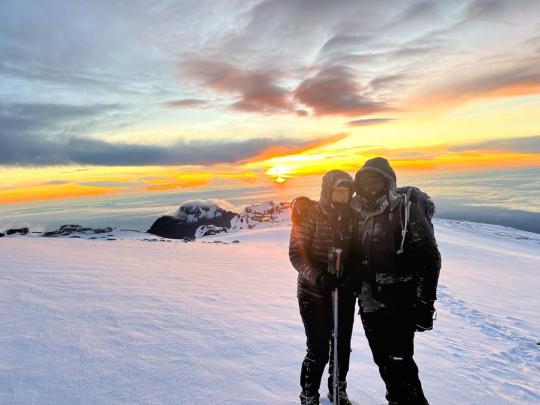
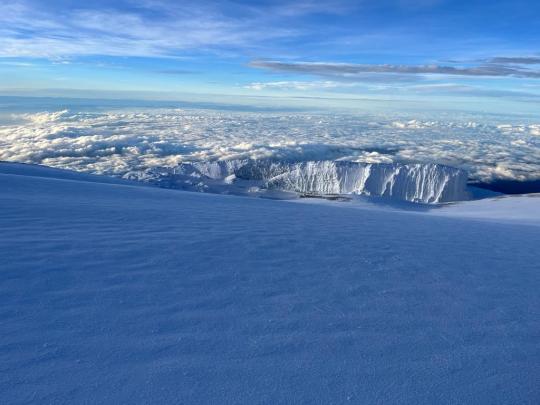

The Machame route on Kilimanjaro is a moderately difficult trail, but very doable even for first-time backpackers with little to no altitude experience. Known as the "Whiskey" route, the Machame route is now the most popular route on the mountain. Compared with Marangu, the days on Machame are longer and the walks are steeper. The Machame route is considered difficult and is best suited for those who are more adventurous and have some hiking or backpacking experience.
The route begins from the south, then heads east, traversing underneath Kilimanjaro's southern ice field before summiting. The minimum number of days required for this route is six, although seven days is recommended.
The Machame route is scenically beautiful and varied. However, due to the heavy crowds, it loses some of its spenders.
Day 1: Machame Gate to Machame Camp
Elevation (ft): (3,000 m): 5. 6,000 ft (1,830 m) to 10,200 ft (3,100 m).
Distance: 11 km.
Hiking Time: 5-7 hours
Habitat: montane forest.
Camp: Machame Camp.
The drive from Moshi to the Mount Kilimanjaro National Park gate takes about 50 minutes. The journey passes through the village of Machame, which is located on the lower slopes of the mountain. We now leave the park gate and walk through the rain forest on a winding trail up a ridge. Lower down, the trail can be muddy and slippery. Gaiters and trekking poles are a good idea here. We continue a short distance until we reach the Machame Camp.
Day 2: Machame Camp to Shira Camp
Elevation (ft): 10,200 ft (3,100 m) to 12,600 ft (3,840 m).
Distance: 9 km.
Walking Time: 4-6 hours
Habitat: Moorland.
Full-board Shira Cave Camp
After breakfast, we leave the glades of the rain forest and continue on an ascending path, crossing the valley along a steep, rocky ridge. The route now turns west onto a river gorge until we arrive at the Shira campsite.
Day 3: Shira Camp to Lava Tower to Barranco Valley.
Shira Camp to Barranco Camp (3,950 m.): 5-7 hours walking
12,600 ft (3,840 m) to 12,700 ft (3,860 m).
Distance: 15 km.
Walking Time: 5-7 hours
Habitat: Semi-desert.
Full Board Barranco Camp
Today we walk on a gentle ascent with panoramic views. We traverse the southwest side of Kilimanjaro, passing underneath the Lava Tower and the final section of the Western Breach, and after a hot lunch at the bottom of the Lava Tower (4,600 m), we descend to the bottom of the Great Barranco Valley (3,950 m).
.
Day 4: Barranco Camp to Barafu Camp
Barranco Camp to Barafu Hut Camp {4600m} 6-8 hours.
4000m/13,000ft to 4700m/15,350ft
Distance: 9km/
Walking Time: 6-8 hours
Habitat: Alpine Desert
Full Board at Barafu Camp.
After breakfast, we leave Barranco and continue on a steep ridge up the Barranco Wall (elves 4250m/13,900ft), through the Karanga Valley (elves 4050m/13,250ft) to the junction which connects with the Mweka Trail. We continue up to the Barafu Camp. You have completed the South Circuit, which offers views of the summit from many different angles. Here we make camp with views of the summit in the distance.
Day 5: Barafu Camp to Summit, down to Mweka Camp
Elevation (ft): 4700m (15,350ft) to 5895m (19,343ft) down to 3090m (10,150ft)
Distance: 6km up; 13km down
Hiking Time: 5-7 hours up; 5-6 hours down
Habitat: Stone scree and ice-capped summit
Very early in the morning (midnight to 2 a.m.), we continue our way to the summit between the Rebmann and Reitzel glaciers. You head in a northwesterly direction and ascend through heavy scree towards Stella Point on the crater rim. This is the most mentally and physically challenging portion of the trek. At Stella Point, you will stop for a short rest and be rewarded with the most magnificent sunrise you are ever likely to see. Faster hikers may view the sunrise from the summit.
From Stella Point, you may encounter snow all the way on your 1-hour ascent to the summit. Once at Uhuru Peak, you have reached the highest point on Mount Kilimanjaro and the continent of Africa!
From the summit, we begin our descent by continuing straight down to the Mweka Camp, stopping at Barafu for lunch. You may want gaiters and trekking poles for the loose gravel going down. We arrive at Mweka Camp and enjoy our last evening on the mountain.
Day 6: Mweka Camp to Mweka Gate, drive to Arusha or Moshi.
Elevation (ft): 3090 m (10,150 ft) to 1680 m (5500 ft).
Distance: 10km/6mi
Hiking Time: 3-4 hours
Habitat: Forest
Meals: B
After breakfast, we continue the descent down to the Mweka Park Gate to receive your summit certificates. At lower elevations, it can be wet and muddy. Gaiters and trekking poles will help. Shorts and t-shirts will probably be plenty to wear (keep rain gear and warmer clothing handy). We will be waiting for you at Mweka Gate to drive you back to your hotel in Arusha or Moshi.
Included
o Park fees,
o Camp fees
o Rescue fees
o 18% VAT on tour fees & services which cost nearly 55% of the total cost charged.
o Transportation to & from the mountain gate
o Professional mountain guides, cooks and porters
o 3 meals daily while on the mountain
Not Included
o Both National and International flights
o Medical insurance
o Tips to mountain crew
o Items of a personal nature
o Laundry Services
o A doctor for the group
#Kilimanjaro Machame Route#Machame Route Itinerary#6 days Kilimanjaro Trek#Kilimanjaro Summit Climb#Machame Route Highlights#Best Time to Climb Kilimanjaro#Kilimanjaro Altitude Acclimatization#Machame Route Camping#Kilimanjaro Trekking Packages#Uhuru Peak Expedition#Machame Route Difficulty#Kilimanjaro Guided Tours#Climbing Gear for Kilimanjaro#Kilimanjaro Base Camps#Machame Route Camping Sites#Kilimanjaro Flora and Fauna#Acclimatization on Kilimanjaro#Summit Success on Kilimanjaro#Machame Route Permits#Kilimanjaro Adventure Tours
1 note
·
View note
Text
Exploring Tanzania with Affordable Safaris and Trekking Packages
Tanzania, renowned for its stunning landscapes and abundant wildlife, offers a range of travel experiences that cater to adventure seekers and nature enthusiasts alike. From the vast Serengeti plains to the majestic Mount Kilimanjaro, the country is a haven for those looking to immerse themselves in the natural world. To help travelers make the most of their visit, Affordable Tanzania Safaris Packages, local tour company in Tanzania, Mount Kilimanjaro Trekking Package, and Safari package provider in Tanzania play crucial roles in delivering memorable experiences at reasonable prices.
Affordable Tanzania Safaris Packages are designed to offer exceptional value while providing comprehensive wildlife viewing opportunities. These packages typically include guided safaris through some of the country’s most iconic national parks and game reserves, such as the Serengeti, Ngorongoro Crater, and Tarangire. By bundling various services such as transportation, accommodation, and park entry fees, these packages make it easier for travelers to experience the richness of Tanzania’s wildlife without breaking the bank. The affordability factor ensures that more people can enjoy the breathtaking scenery and diverse fauna that Tanzania has to offer, making it an accessible destination for budget-conscious adventurers.
A local tour company in Tanzania plays a vital role in curating authentic and personalized travel experiences. These companies, rooted in local knowledge and expertise, provide valuable insights into Tanzania’s cultural and natural heritage. They offer customized itineraries that cater to individual interests and preferences, ensuring that travelers get to explore the country's hidden gems as well as its famous landmarks. Working with a local tour company ensures that travelers benefit from insider knowledge and support throughout their journey, which can enhance the overall experience and provide a deeper understanding of Tanzanian culture and wildlife.
For those looking to conquer one of the world’s highest peaks, the Mount Kilimanjaro Trekking Package is a standout option. Mount Kilimanjaro, standing at 5,895 meters, is a coveted destination for trekkers from around the globe. Trekking packages are designed to accommodate various levels of experience, from novice hikers to seasoned adventurers. These packages typically include guided treks, necessary permits, and support services such as porters and camp setups. The trekking experience is tailored to ensure safety and enjoyment, with itineraries that allow for acclimatization and optimal chances of reaching the summit. A well-organized Mount Kilimanjaro Trekking Package ensures that trekkers are well-prepared and supported throughout their climb, making the adventure as rewarding as it is challenging.
In addition to safaris and trekking, a Safari package provider in Tanzania is crucial for those seeking a well-rounded wildlife adventure. These providers offer a range of safari options, from luxury lodges to more rustic camping experiences, catering to different preferences and budgets. By coordinating all aspects of a safari, including game drives, accommodation, and meals, they ensure a seamless and enjoyable experience. The expertise of a Safari package provider in Tanzania helps travelers navigate the complexities of planning a safari, allowing them to focus on the excitement of spotting wildlife and exploring Tanzania’s natural beauty.
In summary, Affordable Tanzania Safaris Packages, local tour company in Tanzania, Mount Kilimanjaro Trekking Package, and Safari package provider in Tanzania collectively enhance the travel experience by offering diverse and accessible ways to explore this captivating country. Each component plays a crucial role in ensuring that travelers can enjoy the stunning landscapes, rich wildlife, and cultural heritage of Tanzania without compromising on quality or affordability. Embracing these options allows adventurers to embark on unforgettable journeys through one of Africa’s most enchanting destinations.
0 notes
Text
An Extraordinary Journey to the Top of Africa
Remaining as a beautiful image of regular excellence and experience, Mount Kilimanjaro is the tallest highest point in Africa. Transcending ocean level, this notable pinnacle draws in hikers and earthy people, among other yearly guests. An excursion to Kilimanjaro involves rich Tanzanian culture, novel biological systems, and stunning scenes, in addition to a trip.
The Savage Thrill
A trek to Mount Kilimanjaro presents more than simply the appeal of reaching its top. The trip starts for many visitors with a safari around the nearby national parks. The safari lets guests see the fantastic species that make this area home. The safari presents nature's wonders, from majestic elephants and cunning leopards to colorful birds and active monkeys. Mount Kilimanjaro safaris involve climbs that provide unforgettable travel experiences.
Selecting a Kilimanjaro Climb Package
Making plans for Mount Kilimanjaro means choosing the ideal climb package that fits your tastes and requirements. Many paths to the top provide different difficulties and breathtaking scenery. Famous for its paved routes and cozy mountain cottages, the Marangu Route—also called the "Coca-Cola Route—is The Lemosho and Machame paths provide breathtaking scenery and a greater likelihood of acclimatization because of their longer itineraries for those looking for a more distant and challenging experience.
When selecting a Kilimanjaro climb package, take into account elements such as the length of the walk, degree of difficulty, and kind of lodging given. Choosing a respectable tour operator that offers support for the local communities, environmental responsibility, and safety priority is crucial. This guarantees not just a good ascent but also benefits the area.
The Journey of Climbing Experience
Mount Kilimanjaro climbing is challenging yet rewarding. Climbing across the mountain's temperature zones will reveal its varied habitats, from alpine deserts to lush rainforests. Usually tried early in the morning, the last push to the peak tests stamina and will. Getting to Uhuru Peak at dawn gives one a feeling of achievement and breathtaking sights that make every step valuable.
A good climb depends on correct preparation. This covers physical instruction, gear acquisition, and knowledge of the need for acclimatization. Though most climbers may reach their aim of standing atop Africa's highest mountain with enough preparation and the direction of competent guides, altitude sickness is a regular difficulty.
Conclusion:
Trekking Mount Kilimanjaro combines cultural learning with adventure and natural beauty. Whether you are starting an exciting safari or facing the Kilimanjaro climb, the encounter is sure to be remarkable. Think about the packages vivaafricatours.com presents for people looking for a thorough and orderly journey. Their knowledge and dedication to providing an exceptional experience guarantee that your trip to Kilimanjaro will be one to write about.
0 notes
Text
Mount Kilimanjaro Climbing - What to Expect When Climbing Africa’s Highest Peak

Climbing Mount Kilimanjaro, Africa's highest peak, is a dream adventure for many. Standing at 5,895 meters (19,341 feet), Kilimanjaro provides a unique experience that combines stunning landscapes, diverse ecosystems, and a rewarding challenge.
Here's what you can expect when undertaking this extraordinary Mount Kilimanjaro Climbing journey:
Choosing the Right Route
Kilimanjaro has several climbing routes, each offering a different experience. Popular options include:
The Machame Route, or “Whiskey Route,” which is more challenging but features diverse scenery.
The Lemosho Route, a longer and less crowded option with breathtaking views.
The Rongai Route, the only northern approach, known for its more remote and quieter path.
The Northern Circuit Route, the longest route around the mountain, provides extensive and immersive views.
These Kilimanjaro Climbing Routes should be chosen based on your fitness level, desired challenge, and the time you have available.
Preparation and Training

Climbing Kilimanjaro requires physical preparation. While no technical climbing skills are needed, being in good physical condition is crucial.
Engage in cardiovascular exercises, strength training, and hiking at higher altitudes if possible.
Proper acclimatization is crucial to avoid altitude sickness, so opting for a longer route can give your body more time to adjust.
This is an important aspect to consider when determining the Best Time to Climb Kilimanjaro.
What to Pack

Your Kilimanjaro Packing List should include lightweight, breathable clothing suitable for a range of temperatures.
Kilimanjaro’s climate varies from tropical at the base to arctic at the summit. Essential gear includes waterproof clothing, a good quality sleeping bag, hiking boots, gloves, a hat, and sunglasses.
Also, don’t forget sunscreen, a headlamp, and a durable backpack.
Daily Itinerary and Challenges
Expect to spend 5 to 9 days on the mountain, depending on your chosen Kilimanjaro Climbing Route.
The trek involves long days of hiking, with varying terrain from lush rainforest to arid desert and icy summit conditions.
Each day’s hike typically lasts between 4 to 8 hours, with Kilimanjaro Altitude gain affecting your stamina.
Health and Safety
Kilimanjaro Altitude Sickness is a risk, so stay hydrated, eat well, and listen to your body. Guides will monitor your health and pace to ensure your safety. It’s also essential to have comprehensive travel insurance that covers high-altitude trekking.
The Summit Experience
Reaching the summit, of Uhuru Peak is a breathtaking accomplishment. You’ll likely start your final ascent in the early hours to witness the sunrise from the top. The views are awe-inspiring, offering a panoramic perspective of the surrounding landscape.
Reaching New Heights with the Right Choice
Choosing the Best Kilimanjaro Tour Operator is essential for a memorable and safe climbing experience. It’s essential to match your climbing aspirations with the offerings of the tour operator.
A KPAP partnership, as held by us at African Scenic Safaris, not only assures the ethical treatment of porters but also exemplifies a commitment to climbers’ safety and well-being.
To gain insight, browse testimonials from climbers about their unforgettable journeys with us. Don’t hesitate to inquire about our detailed Kilimanjaro Climbing Packages and receive a complimentary tailored quote.
#Climbing Mount Kilimanjaro#Mount Kilimanjaro Climbing#Machame Route#Lemosho Route#Best Time to Climb Kilimanjaro#Kilimanjaro Packing List#Kilimanjaro Altitude Sickness#Kilimanjaro Climbing Packages#SoundCloud
1 note
·
View note
Text
Trekking Through Tanzania: A Climb Up Mount Kilimanjaro
Positioned in East Africa, Tanzania beckons you, keen on adventure, with its array of landscapes and abundant wildlife. Partake in the trekking expeditions Tanzania offers for glimpses of its natural wonders. Your eyes will feast on Mount Kilimanjaro's majesty and the vast Serengeti.
Discover Mount Kilimanjaro’s Beauty
Soaring to 5,895 meters, Mount Kilimanjaro stands as Africa's highest peak. Annually, multitudes aspire to scale its heights. Path options vary, with each offering different challenges, including the preferred Marangu and Machame routes.
Navigate ecosystems teeming with life on your Mount Kilimanjaro trip. Journey from rainforest depths to sparse alpine terrain. En route, encounter the native Kilimanjaro tree hyrax and the radiant malachite sunbird.
Journey through the Serengeti Plains
Spanning 30,000 square kilometers, the Serengeti Plains overwhelm Serengeti National Park. UNESCO heralds this expanse for the great wildebeest migration, with 1.5 million on the move, joined by herds of zebras and gazelles. This migration is unparalleled and nurtures a broad diversity of mammals. The plains are home to an age-old ecosystem, virtually intact for a million years, sustaining a dynamic ecological web. This landscape is a refuge for wildlife such as lions, hyenas, and leopards.
Technical Data and Safety Considerations
Understand the technical details and safety before any Kilimanjaro trekking tours. The mountain's high altitude poses risks. Altitude sickness becomes a concern past 2,500 meters. Take time to acclimatize, drink plenty of water, and ascend slowly for a safer summit attempt.
On the Serengeti trails, you must follow park rules and use marked paths. This reduces your ecological footprint and keeps you safe. Employ guides and porters for a richer journey and to benefit local residents.
0 notes